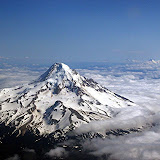MENTOR - 'Pulsing' a control technique when you fly
Mentor
Discovering your own best technique to handle the controls of an airplane can be accelerated by using this method.
How do you hold the control column and rest your feet on the pedals? Do you squeeze tightly? Let go often? Use both hands? One hand? Three fingers? It seems simple, but how you touch the controls determines how the plane will respond and fly. How you touch the controls also determines how you get feedback to your brain and directions from your brain out to your hands and feet.
The initial inclination is to squeeze the controls too tightly, after all, it's an AIRPLANE right? It MUST take a lot of strength and energy! (We've all seen the Bugs Bunny cartoons where the hapless hare is the pilot and is tugging on the controls with all his might). Actually, the exact opposite is true. The lighter the touch, the better for all.
I recommend a technique I call 'pulsing.' Put your hand on a pencil or some object right now. Let it sit still for a while. Notice how you start to lose sensitivity to the object? Now, do it again, this time, gently 'pulse' or move your fingers on the object. Don't lift them off the object, and never squeeze hard, just alter the pressure by pulsing on the surface.
Why is this useful in the airplane? Several reasons:
First, by pulsing on the controls, you remain sensitized to every nuance of movement in the controls caused by outside forces - usually wind - and you can react accordingly, with equal counter pressure. Notice I said 'pressure' and not 'force!'
Secondly, by pulsing, you become aware of what input is from you and what is from the plane or outside forces like wind, and you are more likely to react appropriately; and less likely to lean over to pick up a pencil and have the other hand, clutching the control column in a tight grip, guide the plane astray unknowingly.
Third, by pulsing on the controls, you are maintaining an active pathway from your brain to your toes and fingers, and also these muscles are remaining warmed up and ready for slight movement, all it usually takes to control the plane well. You will be more likely to avoid a sluggish response when a response is needed, and therefore less likely to over-control the aircraft when you do respond.
Try this technique on your next flight! Write and tell me what you think or if you have any questions.
Onward & Upward! ~ rfb









No comments:
Post a Comment